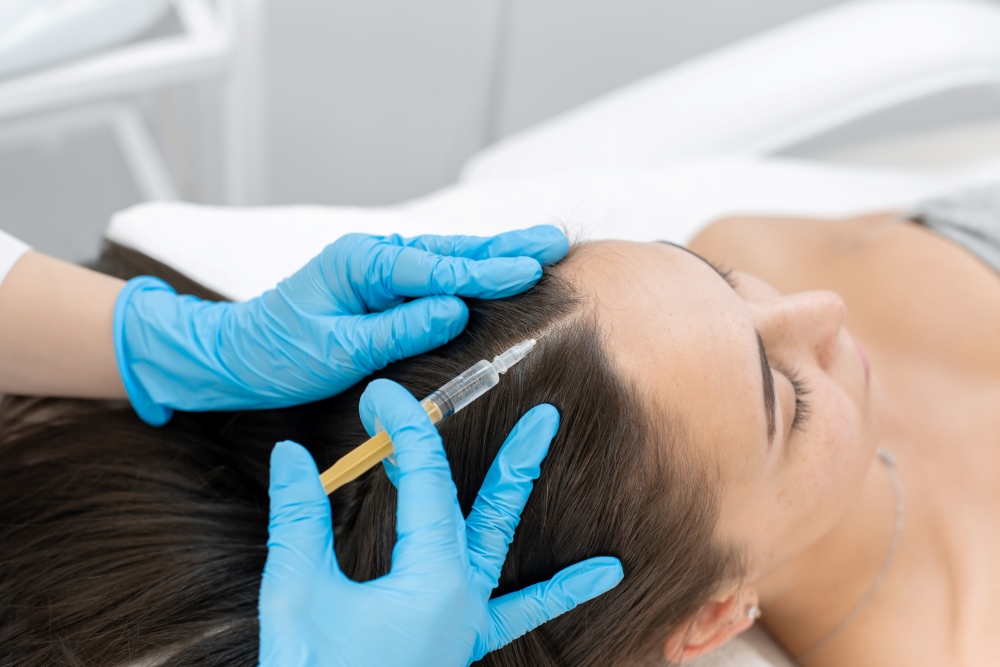How Many Sessions of PRP for Hair Growth Are Needed?

Hair loss, being one of the most prevalent complaints among millions, provokes the use of different remedies to treat it. Platelet Rich Plasma Therapy, or PRP, is a non-surgical treatment and is one such remedy to ensure hair growth. It is a new therapy that enlists the body’s natural healing powers in refreshing the hair follicles. However, the most commonly asked question about PRP to stimulate hair growth is, “How many PRP sessions does one need for hair growth?”
PRP treatment will be discussed in this article, its effectiveness, and the number of sessions that may be required to achieve good results.
Understanding PRP Therapy
PRP treatment is a minimally invasive procedure wherein a small quantity of the patient’s blood is drawn, and after being processed to concentrate the platelets, it is then injected into the scalp. Platelets are known to carry growth factors that help stimulate hair follicle activity and increase blood flow to the scalp-promoting its healing process. Generally speaking, PRP therapy targets the rejuvenation of hair follicles for thicker and healthier hair growth.
PRP treatment consists of three steps:
- Blood Draw: A medical professional draws blood from the patient’s arm.
- Centrifugation: The blood is processed in a centrifuge to separate and concentrate platelets and growth factors.
- Injection: The PRP is injected into areas of the scalp where hair thinning or loss is observed.
How Does PRP for Hair Restoration Work?
PRP sessions that aim to stimulate hair growth will vary depending on several factors, including the severity of hair loss, individual patient response, and what it is that the patient aims to achieve. All things considered, most practitioners recommend an initial treatment protocol consisting of three to four sessions in the first six months. Here’s a breakdown of the typical treatment schedule:
Initial Series of Treatments
In general, the frequency of PRP treatments for patients is every four to six weeks. In this case, the growth factors create a sort of ‘snowball’ effect where they take some time to actually initiate their action on the hair follicles.
Generally, the initial series lasts for a period of three to four months. During this time, the intervals between sessions can be observed by the patients.
Maintenance Treatments
It is advisable to have treatments after one has completed a series of treatments to maintain the results one has achieved. The frequency, in this case, might vary depending on one’s needs; however, it is often recommended to have one session every six to twelve months. This ongoing care helps in preserving hair density and maintaining growth.
Factors Influencing the Number of PRP Sessions
- Extent of Hair Loss: Patients with mild to moderate hair thinning often see satisfactory results with a standard treatment course, while those with more advanced hair loss may need additional sessions.
- Individual Response: Each person responds to PRP differently, with some seeing quicker improvements. Follow-up sessions help assess progress and adjust treatment if necessary.
- Root Cause of Hair Loss: Conditions like androgenetic alopecia respond well to PRP. Hair loss from other causes, such as stress or nutritional deficiencies, may require holistic treatment beyond PRP.
Expected Results and Timeline
Improvements in hair growth usually become noticeable within three to six months of PRP treatment, including:
- Increased Hair Thickness: Patients often report thicker, fuller hair.
- Reduced Hair Shedding: Less hair shedding improves the sense of hair density.
- New Hair Growth: New hair may sprout in areas previously affected by thinning.
Results can vary, with full benefits sometimes taking up to a year.
Schedule Your PRP Hair Treamtent Today
If you are interested in learning more about PRP for hair restoration, please call the office of Dr. Ghozland today at 310-393-9359 and we will be happy to help answer any questions you may have and get you set up with an appointment.
